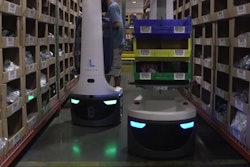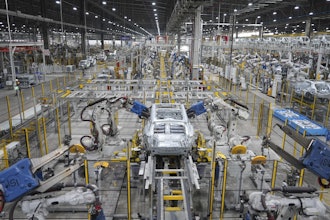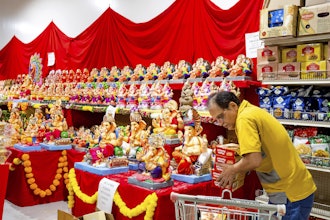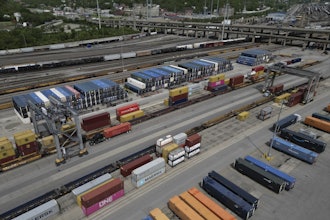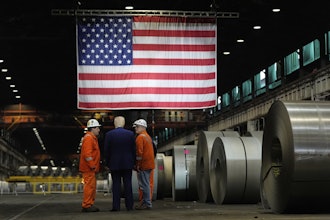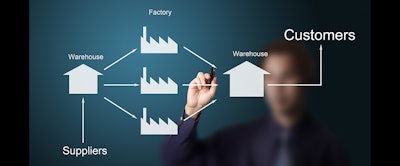
The supply chain industry is just like any other industry: there are lots of terms, terminology, and a fair share of plain old jargon used in the industry every day. However, a lot of it is just not fully understood, especially by new people entering the industry. And to make matters worse, new terms are finding their way into the industry all the time, bewildering those that have been around for a while.
Understanding the language used in the supply chain industry is crucial for suppliers as well as their end-customers. It makes sure everyone is on the same playing field, product orders, quotes, and purchases are all prepared correctly, and helps eliminate confusion.
With that in mind, here are a glossary of terms supply chain professionals — new and old — should know and understand:
Unbroken Cold Chain
First, let’s start with the definition of a “cold chain.” This refers to a temperature controlled supply chain. An unbroken cold chain is an uninterrupted series of storage and distribution activities which are maintained at a given temperature range. It is used to extend the life of products such as agriculture food items, frozen food, pharmaceuticals, even flowers. These products are referred to as “cool” cargo or “cold” cargo.
Consultative Selling
Consultative selling is a personal working relationship between the distributor and the customer and is all about putting the needs of the client first. It's about moving from selling products and replacing it with selling solutions to fit the client’s needs. The approach focuses on asking questions as well as an ongoing dialog with the client or prospective client to get a deeper understanding of their business and their facility needs. It also involves requesting feedback. The feedback helps ensure both parties are communicating well and understanding each other effectively.
Cost of Acquisition (Total Cost of Acquisition)
Also known as acquisition costs, this is the cost an end-customer recognizes as the cost of supplies and equipment minus such things as discounts, rebates, incentives, etc. Additionally, for manufacturers and distributors, an acquisition cost can describe the costs accrued in their efforts to acquire a new customer.
Cost of Ownership (Total Cost of Ownership)
This reflects the cost to purchase a product plus the cost to own it. This is also sometimes called the “long-term price” of the product. When choosing among different products, an astute customer will want to know these costs. A wise distributor will want to make sure the end-customer is aware of these expenses as well.
Sustainable Purchasing
This is a term that has evolved in the past few years as more facilities have adopted green and sustainability initiatives. Initially, it referred to an effort by customers to select greener, healthier, and more sustainable products from vendors and companies that make these products. The goal is to ensure every product selected protects human health, the environment, and has positive social impacts. In recent years, it also refers to purchasing products, for instance, in large containers, to reduce packaging needs, use less fuel to deliver the products, which also means fewer greenhouse gasses are emitted, and less waste.
Green Certification
There are now several green certification organizations. They certified cleaning solutions, paints, paper products, building materials, soaps, food packaging items, and much more. To understand what green certification means is best understood by how a product is green certified. It means it is third-party tested to ensure it meets the standards and criteria of a leading green certification organization. While the rules may vary, in general, the guidelines of these organizations are somewhat similar. Once certified, the product may bear the “mark” of the certifying organization. Note: green certification is typically for only two to three years, and if the ingredients used to make a product are changed, the product must be recertified.
Dashboards/Solution Selection
Some end-customers, as well as distributors, turn to online dashboards to help facilitate product selection. Some dashboards are designed to operate on any mobile or traditional computer and help the customer/distributor compare products as to price, performance, effectiveness in specific situations, etc. Dashboards are also used to help eliminate trial-and-error purchasing.
Integrated Supply Chain Management
The supply chain is made up of a network of suppliers, manufacturers, warehouses, distribution centers, and end-customers through which materials and products are acquired, used in the manufacturing of goods, transported, and delivered. Supply chain management refers to the tactical and operational decision-making that helps optimize the supply chain, its performance, and deal with unexpected challenges. For instance, a supply chain manager may run into and must address situations in which materials are not delivered on time; manufacturing fails; customers cancel or change orders or other deviations in plans and coordinate plans and revisions as necessary.
 Michael Wilson, Vice President of Marketing for AFFLINK
Michael Wilson, Vice President of Marketing for AFFLINKMichael Wilson is vice president of marketing for AFFLINK, a global provider of supply chain optimization, providing clients with innovative processes such as ELEVATE, as well as procurement solutions to drive efficiencies in today’s leading businesses. He can be reached thru his company website at www.AFFLINK.com






